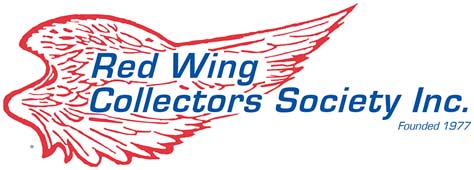There may be a RWCS Chapter near you
Learn more on our Chapters Page.
Membership is only $35 a year and includes six full-color newsletters and exclusive, members only, online content
After parting ways with George Rumrill in December, 1937, Red Wing continued to make pottery for another thirty years. In 1938 the company commissioned New York-based industrial designer Belle Kogan to design 100 new vase shapes for production. These were aggressively marketed in the trade magazines as "the Belle Kogan 100." Kogan also designed some Red Wing lines in the 1950s and 1960s.
In 1940 Charles Murphy was hired as staff designer. Prior to this association, Murphy’s career had brought him into close association with several of the top names in American pottery, including Guy Cowan, Viktor Schreckengost, and Frederick Rhead. Murphy left Red Wing in 1947, but returned to work on a free-lance basis from 1953 until the company closed in 1967. Without question, he was the major influence on the look of Red Wing pottery–both artware and dinnerware–after 1940.
It is almost impossible to categorize the more than 1,000 pieces of Red Wing artware into specific decorative movements. By and large, the products follow the design trends of their times, although many top-selling items were retained decade after decade.
Some lines clearly stand out from the crowd, however. Especially notable are the lines that were the first of the post-war era Modernism movement: the Engobe pieces, the square-based crackle series, and a series in a style referred to as mid-century high relief. In the 1960s Red Wing was especially successful interpreting the abstract design trends of the era with Charles Murphy’s Decorator line in Crystalline glazes and with Bell Kogan’s Prismatique line.
Ray Reiss
| {mosimage} | {mosimage} | {mosimage} |
|
One of the six
Gray Englobe with Turquoise figures that Charles Murphy designed in 1942 |
A Magnolia vase
designed by Belle Kogan |
One of the mid-century
high-relief vases designed by Charles Murphy and offered for sale in 1942 |
